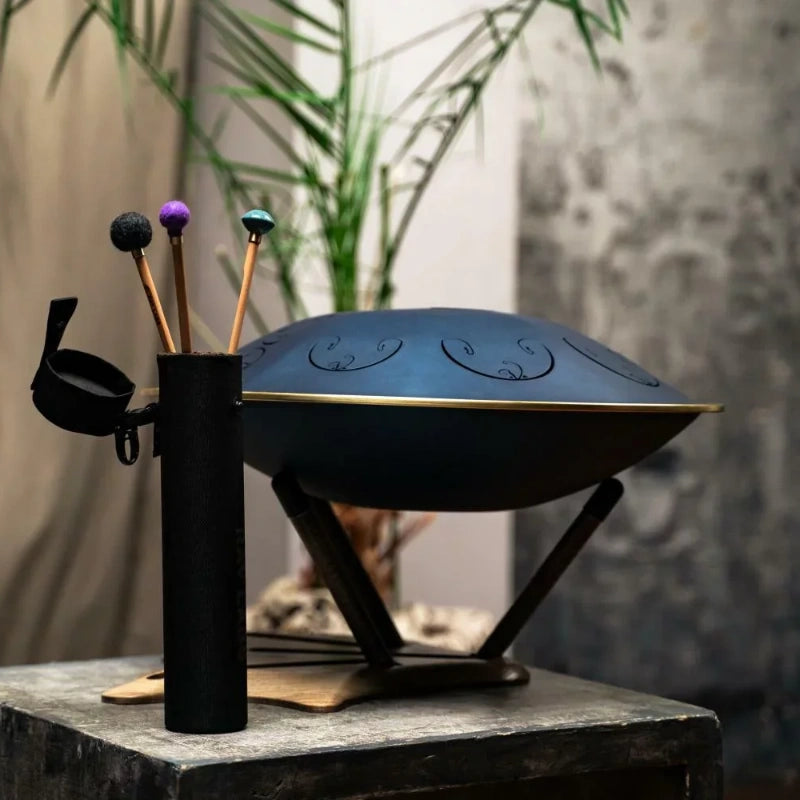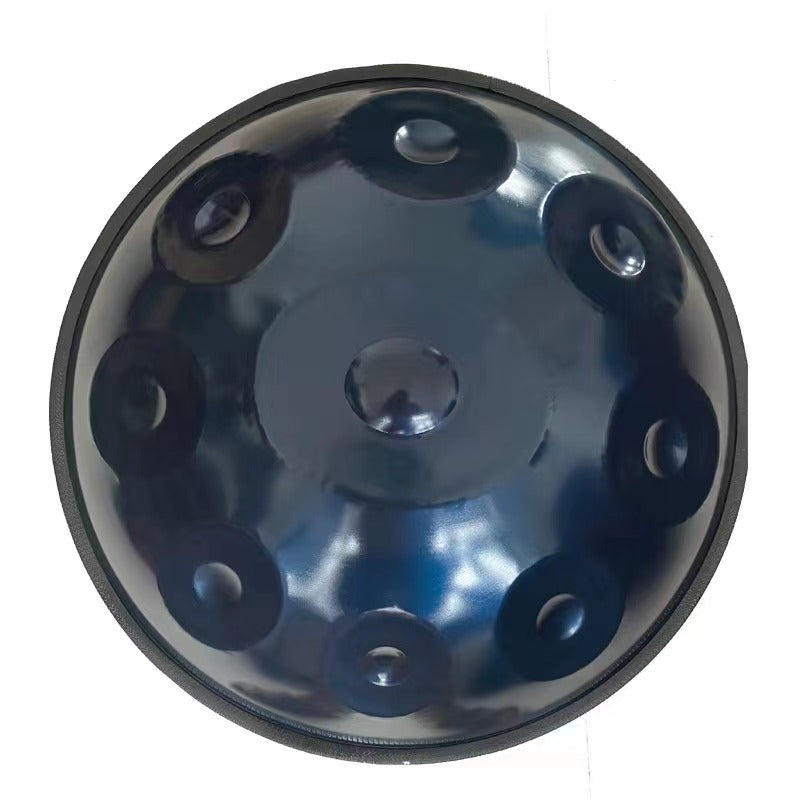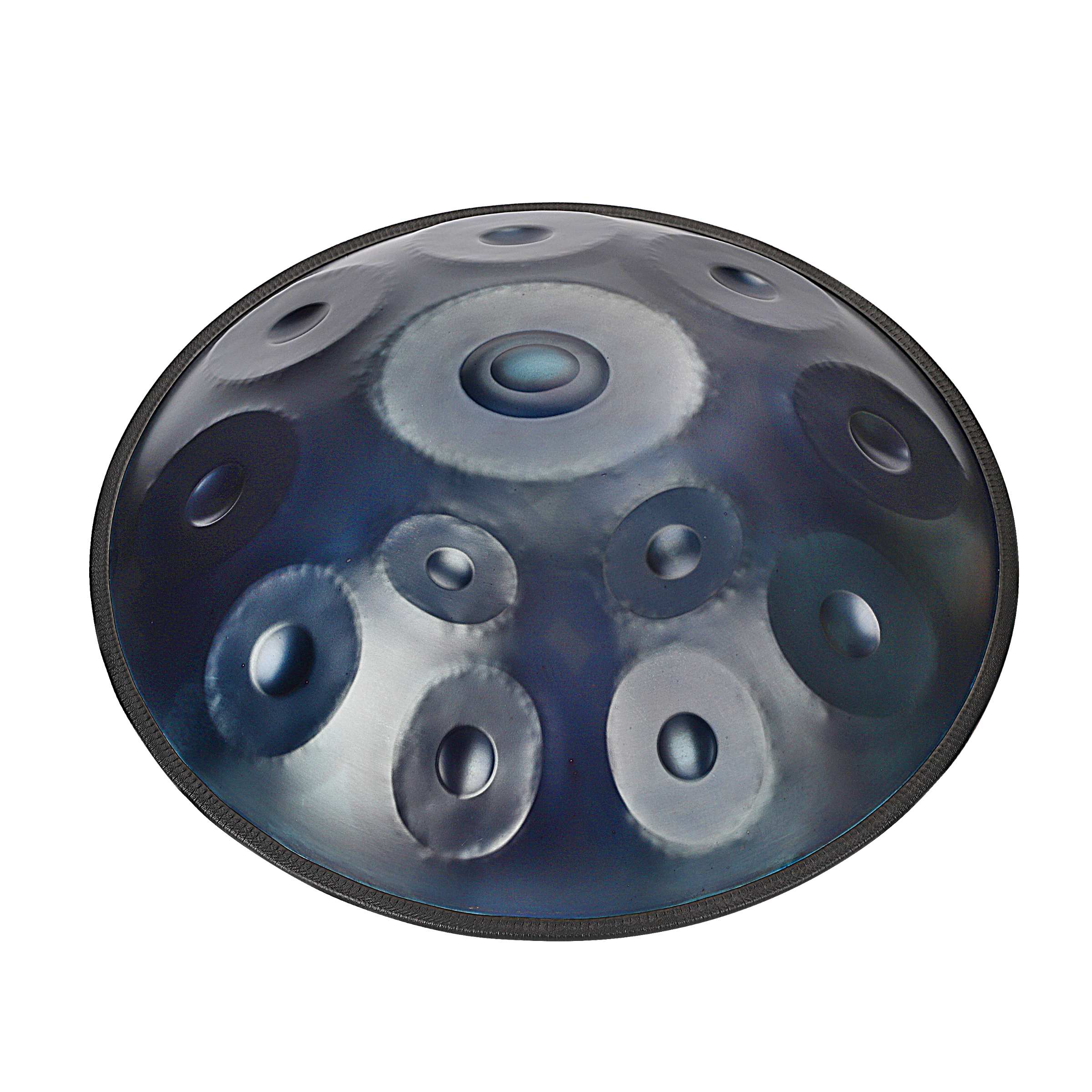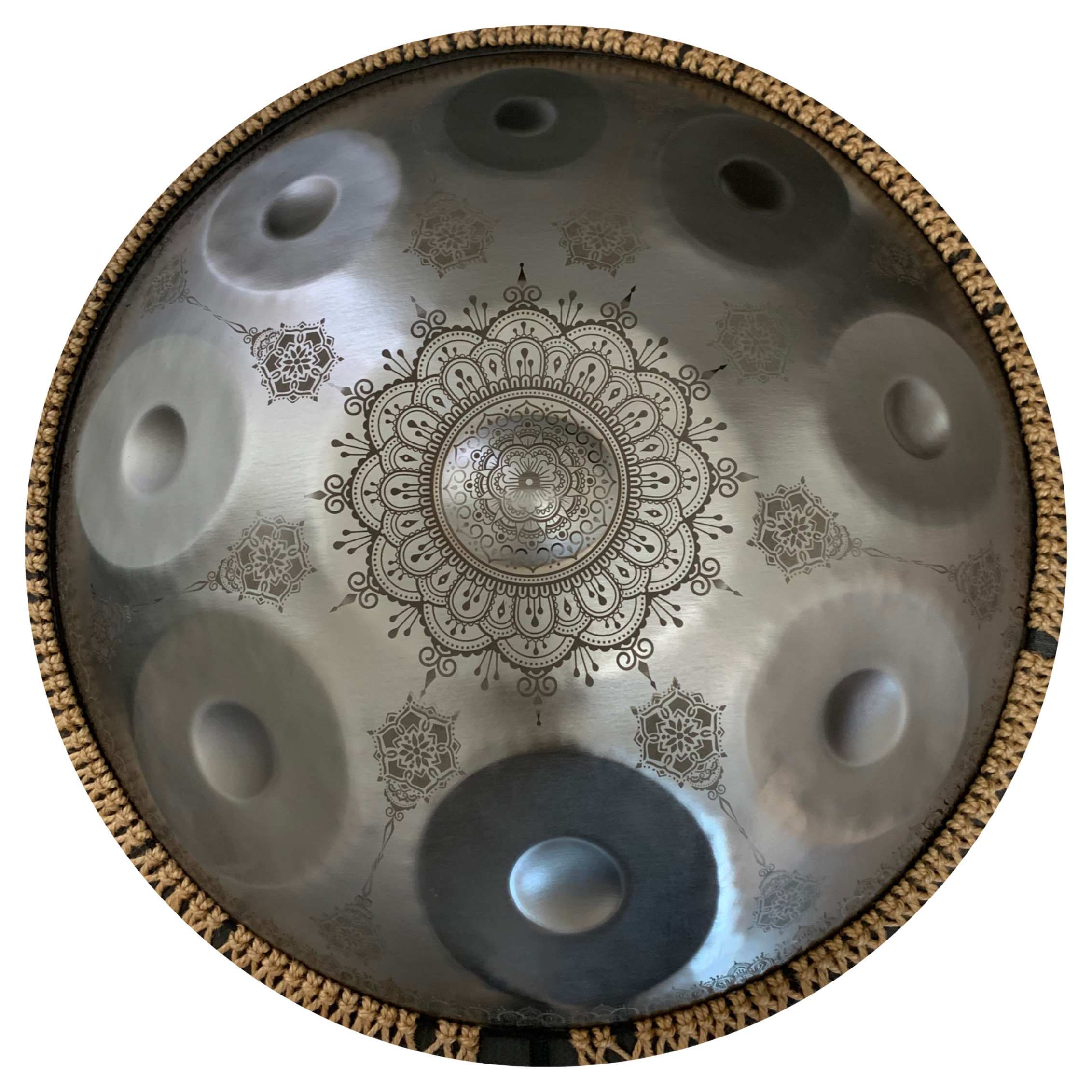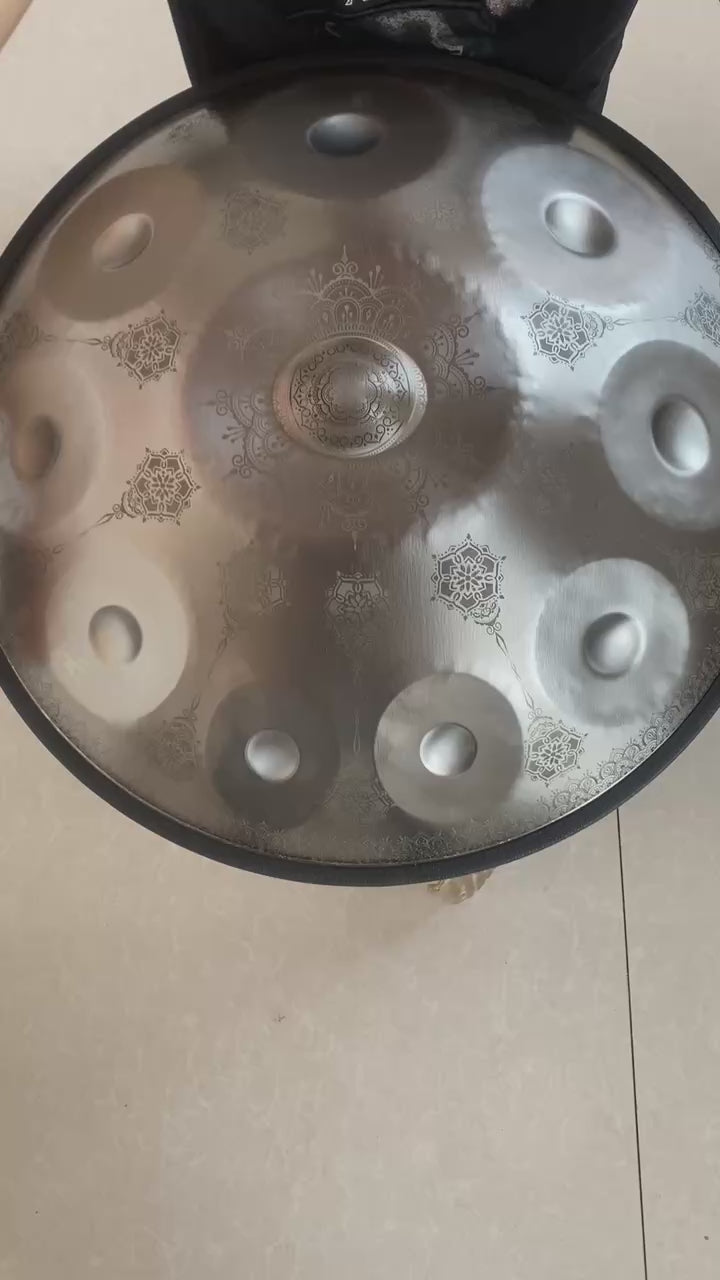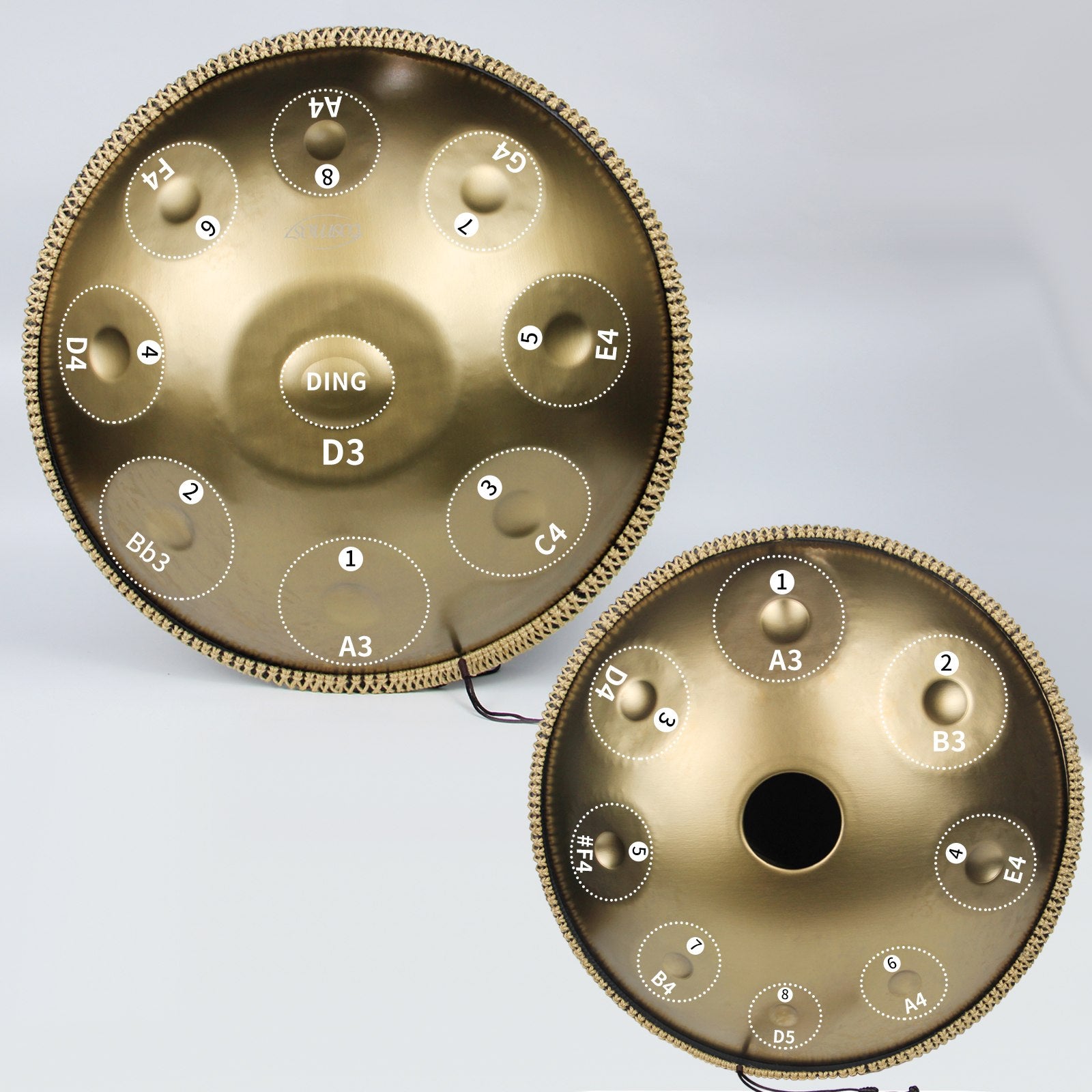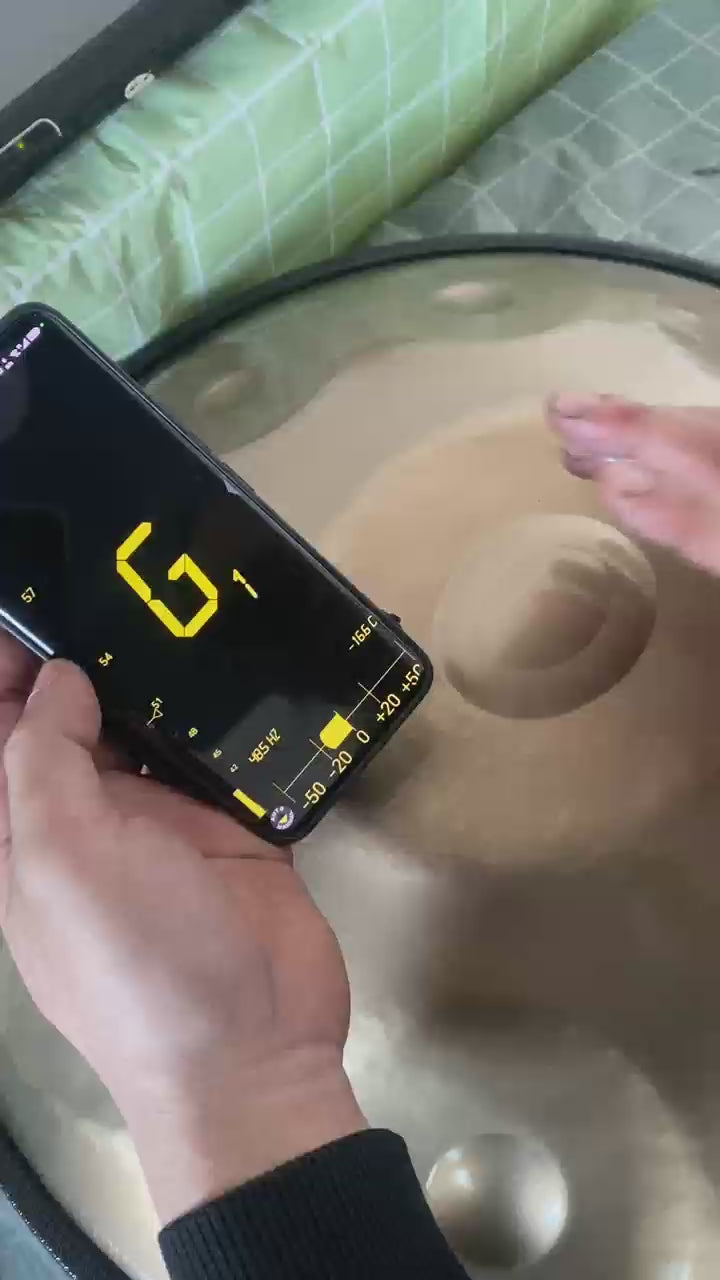Choosing Your Handpan
When selecting a handpan, consider the material. Stainless steel handpans resist corrosion and rust. They produce a brighter tone with longer sustain and higher amplitude. These handpans require specific handling during manufacturing, but reputable makers can produce stable and high-quality instruments.

Nitrided steel handpans are durable and produce a warmer, softer tone. They are easier to shape and tune, resulting in consistent sound quality.
Understanding Handpan Construction
A handpan is crafted from two steel shells joined together. The top shell features tone fields, which produce specific pitches when struck. This handpan instrument is made with hand and requires a great deal of skills and crafts to achieve the sound quality the handpan maker desires.
Learning Handpan Playing Techniques
Playing the handpan involves striking the tone fields with your fingertips. You can play the instrument on your lap or a stand. By varying the force and location of your strikes, you can create different notes, harmonies, and dynamic ranges. Different strikes call for a wider range of musical expressions and creative compositions.
Exploring the Mesmerizing Sounds
The handpan resonant steel construction and carefully tuned tone fields create a harmonious musical experience. The notes blend together beautifully, producing soothing melodies that transport listeners to distant realms.
Mastering Handpan Techniques
Before you master the handpan, here are some basic tips to build your handpan skills.
Start with the Basics
Begin with simple techniques such as tapping the tone fields gently with your fingertips. Focus on producing clear and resonant notes. Practice hitting each note individually to understand the tonal range of your handpan. You can try to experiment more with the striking techniques to get yourself used to the feeling of using your fingers or sides of hands.
Develop Your Rhythm
Rhythm is crucial in handpan playing. You can start by practicing basic rhythmic patterns and using a metronome to increase tempo. You should experiment with different rhythms so you can add diversity to your handpan playing. Moreover, you can play the instrument along your favorite songs.
Explore Dynamic Control
What dynamic control refers to is the ability to change the volume and intensity of your playing. As a handpan musician, you can strike the handpan softly at first and then slowly increase the strike force, as this can help you create much louder sound. This gradual increase in strike force is a technique to make the music you create expressive and emotional.
Incorporate Hand Techniques
Handpan musicians use different hand techniques like slaps, taps, and glides to create a more complex sound to the music. When you slap a handpan with the flat side of your hand, it creates a sharp sound. Taps are quick, light strikes that create a delicate tone. Glides involve sliding your fingers across the surface of the handpan, creating a smooth, continuous sound. Practice these techniques separately before incorporating them into your playing.
Focus on Finger Placement
Correct finger placement is essential for producing clean and precise notes. Aim to strike the center of each tone field with the tip of your finger. Avoid hitting the edges of the tone fields, as this can produce unwanted overtones. Practice striking each note accurately to develop muscle memory and precision.
Learn Chords and Harmonics
Chords and harmonics add depth and richness to handpan music. The difference between a chord and harmonics is that you can produce a chord sound by striking many tone fields one after the other, whereas a harmonic requires gently touching the tone fields whilst striking them. You can practice playing chords and harmonics and create a varied musical composition.
Seek Guidance and Feedback
Learning from experienced players can accelerate your progress. You can ask for guidance from mentors who can give you feedback that can help you refine your techniques. Online tutorials, instructional videos, and books by renowned handpan masters are valuable resources. Join handpan communities to share your experiences and learn from others.
Regular Practice
Consistency is key to mastering the handpan. Practice your handpan drum regularly so you can get better at it. You should focus on the rhythm, dynamics and technique of the handpan. As a tip: record your handpan practice sessions and save the recordings to track your progress each session.
Maintain Your Handpan
Proper maintenance ensures your handpan remains in optimal condition. You should wipe your handpan regularly with a cloth to get rid off any dust particles and oils. Furthermore, you can put a thin coating of oil on the handpan drum to prevent any rust and corrosion. Plus, keep your handpan in a secure covering when you’re not using it to avoid causing it any damage.
Experiment and Innovate
You shouldn’t be afraid to experiment with new sound techniques. The handpan drum is a very versatile instrument that allows for creativity. You can try out a variety of playing styles, like tapping, slapping, or using mallets. Furthermore, you can explore many other musical genres and add elements of them into your instrument playing. Innovation and experimentation will help you develop a unique voice on the handpan.
Engaging in Handpan Communities
You can be a part of online groups and forums to connect with fellow handpan users. You can share your musical experiences, seek advice from them, and learn from your fellow players. Attend workshops and masterclasses to receive personalized feedback and witness handpan mastery firsthand.
Balancing Technique and Expression
While technical skills are essential, artistic expression is equally important. Use your technical proficiency as a foundation for creative exploration. Embrace your individuality and let your personal experiences influence your playing style.
Overcoming Performance Challenges
Performance anxiety is common, but you can manage it just as easily as well. You can practice these relaxation tricks to calm yourself down before big performances and it will help you engage with your audience better.
Handpan for Mindfulness and Meditation
Handpan music is ideal for mindfulness and meditation. Handpan’s peaceful tunes can help you eliminate distractions and focus on mindfulness. Handpan’s music has a slow rhythm that leads to deep breathing and a reduction in stress. The lively tones help ground your emotions and help you let go of negativity.
Handpan in Modern Therapy
Therapist and healers use the melodic handpan music to help their clients deal with their emotional and psychological issues. Handpan’s serene tunes can help reduce anxiety and stress, it can help improve sleep patterns, and allow for catharsis. Music and sound therapist use handpan sounds to create a peaceful and lively environment.
Conclusion
The handpan is a magical musical instrument that leads to a melodic world. The handpan is the perfect instrument no matter if you’re seeking a new experience or exploring therapy. You should embrace the challenges and celebrate the victories that come with and let the handpan be your guide to achieve musical mastery as well as personal growth.

